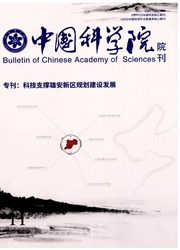

 中文摘要:
中文摘要:
从克鲁格曼的地理本性论出发认识全球地缘政治经济基础。本文通过收集2000-2012年的世界主要21个国家(地区)的金融业和制造业增加值,运用区位商模型分析世界主要国家(地区)的金融业与制造业发展集中度,同时对各国资源输出情况进行对比,最后进行聚类分析。结果发现:全球一体化使世界典型国家(地区)类型趋于明显,呈现新的"三个世界"特征:美国、英国、瑞士、新加坡以及中国香港属金融业主导国家(地区);泰国、中国大陆、韩国、德国、日本、越南和中国台湾属制造业主导国家(地区);加拿大、俄罗斯、印度尼西亚、马来西亚、澳大利亚和墨西哥属资源开发业主导国家;印度和法国目前在多领域均得到发展,属过渡型国家。这种地理本性决定的经济分工分类,是各国的地缘政治经济学基础,将影响他们的地缘政治经济学立场。
 英文摘要:
英文摘要:
This paper tried to understand the global geopolitical economic base from the view of Krugman geographical natures. By collecting the added value in the financial and manufacture sectors of the world's major 21 countries or regions from 2000 to 2012, the authors applied a location quotient model to analyze quantitatively the and concentration status of the world's major countries in both sectors, compared with the situation of resources output in countries and regions. The paper obtained a clustering catalogue list, i.e. "Three Worlds" in globalization era: financial-leading countries (areas) such as USA, UK, Switzerland, Singapore and Hong Kong (China), manufacturing-leading countries (areas) such as Thailand, China, South Korea, Germany, Japan, Vietnam and Taiwan (China), and resource development leading countries (areas) such as Canada, Russia, Indonesia, Malaysia, Australia and Mexico. Some countries like India and France, surfaced in equivalent development and might be defined as transitional countries. This classification of economic division may be a guidance for the standing points in each country in geopolitical and geopolinomical sense.
 同期刊论文项目
同期刊论文项目
 同项目期刊论文
同项目期刊论文
 期刊信息
期刊信息
